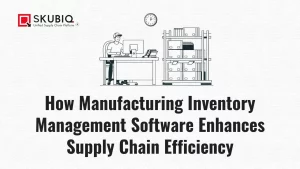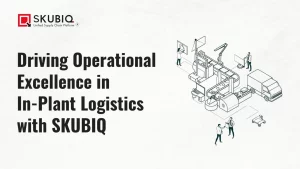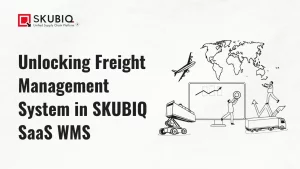According to the index published by the World Bank, India ranks 63rd in the Ease of Doing Business 2022, which has improved from 142th in 2014. It is also the 5th largest economy in the world and is on the way to becoming the 4th largest economy very soon. Businesses strengthen the economy and bring growth to a country. And now there are new updates on the national logistics policy framework that we will see further in this article.
We, as an economy, are doing fine and are globally competitive, but we still need to improve on a lot of factors. Logistics management is one of them. To keep the business running, the logistics process is considered to be a vital component of any business. It is the backbone of any business. It optimizes the supply chain processes, which in turn enhances the customer experience.
What Do Statistics Say About It?
Logistics management is running the process of planning, implementing, storing, and movement of goods in an efficient manner. Logistics is something that can’t be ignored and comprises a large number of expenses by businesses.
India’s poor logistics is one of the reasons why we perform poorly in terms of handling businesses. It is estimated that around 13-14% of the GDP is the cost of India’s logistics, which is very high. If we compare the logistics expenses with other developed countries, it is only around 7-8% which makes them capable of spending their money on the betterment of businesses.
To deal with the high expenses of logistics management, our government constantly tries to improve the system by implementing new programs such as the national logistics policy in India.
The latest policy framework being implemented is the National Logistics Policy in India, which is implemented with the intention of the smooth functioning of services.
Let’s delve deeper into the new policy framework and learn how you can do the best strategic logistics planning.
What Is the National Logistics Policy in India?
The National Logistics Policy India was launched by the Prime Minister on 17th September 2022 to improve the logistics management of the country and reduce its overall expenses. The program aims to cut down on the country’s logistics expenses from the existing 13-14% of India’s GDP, which is just double that of other developed countries.
Our country lacks proper automation of global logistics, which results in poor productivity. The launch of this policy framework is expected to cut down the logistics cost by 8% in the coming 5 years. It will increase the competitiveness in Indian and international markets for Indian products and services, adding to the value addition of our economy and enterprise.
It is a comprehensive effort to create a modern infrastructure to deal with all the issues and complications related to the logistics sector to prepare a strategy that boosts the economic growth of our country.
The program, National Logistics Policy India, ensures that the complications related to logistics are minimized, addresses cost and inefficiency issues, and promotes the smooth movement of goods without any hurdles by strategic logistics planning. It will also facilitate international and inter-state movement and exchange of goods besides generating new employment ventures for the people.
By improving on all these areas, the program aims to increase exports significantly, which will positively impact the people related to the sector, letting them earn a huge profit. The program, hence, will bring India closer to becoming a logistics hub and a global manufacturing powerhouse. With the vision of making India a $5 trillion economy by 2024-25, the country needs to improve its connectivity and infrastructure, for which the policy framework provides the required boost.
Why Was The Launch Of The National Logistics Policy India Required?
India’s logistics expenses are around 13-14% of the country’s GDP, which is almost double the developed country’s logistics expense. To deal with the rising expenses, the government felt the need to launch the National Logistics Policy in India to rectify the existing problems in the logistics processes of the country.
By bringing down the cost, we can become globally competitive in domestic as well as export markets. The policy framework is an efficient solution to improve the country’s ranking in the Ease of Doing Business index, besides giving people innumerable job opportunities.
What Are The Steps Undertaken In The National Logistics Policy?
The National Logistics Policy framework has 4 significant steps and are
1] Integration of Digital Systems(IDS)– Under this, 30 different systems of seven departments, such as road, aviation, railways, commerce, customs, railways, and foreign trade, will be integrated.
2] Ease of Logistics(ELOG)– ELOG will ensure and enable the seamless process of logistics business with ease in accessibility and transparency.
3] System Improvement Group(SIG)– It will monitor all the issues and complications related to the logistics project.
4] Unified Logistics Interface Platform(ULIP)- ULIP will make sure that the cargo movement does not take a lot of time and that the exchange of information is done confidentially on a real-time basis.
What Is The Government Doing To Improve The Country’s Logistics?

The government is trying its best to improve the country’s logistics by implementing new policies and investing in new technologies. To fulfill the vision of making the country a $5 trillion economy, a new and effective policy framework is implemented. It is necessary in order to accelerate the development of a fragmented logistics system.
Logistics’ new era is based on digitization, which will be improved only when the government invests in newer and more efficient technology. To improve the logistics connectivity for the systematic development of the infrastructure, the government has come up with several initiatives in the past. Some of them are, Bharatmala, Sagarmala, and Dedicated Freight Corridors. Some other initiatives include a paperless EXIM trade process with the help of faceless assessment, e-sanchit, FASTags, provisions for e-way bills, etc.
How Will The National Logistics Policy Framework Cut Down The Cost Of Transport?
With the launch of the National Logistics Policy India, the government aims to cut down dependence on road transport for cargo movement. This enables them to explore other modes of transport, such as air, railways, and water, cutting massive costs in the process.
Until now, there has not been a single dedicated department that manages the logistics sector of the country. The Indian logistics market is worth $200 billion but does not function efficiently because of the problem mentioned above. As stated by the commerce industry, the country’s logistics sector is quite complex. It consists of more than 20 government agencies, 37 export promotion councils, 40 Partner Government Agencies, 200 shipping agencies, 129 Inland Container Depots, 36 logistics services, 168 Container Freight Stations, and 50 IT ecosystems, insurance, and banks agencies.
The policy framework is built to manage the humungous sector that is defragmented, to fill the missing gaps in the sector, and to draw more investments into the country that brings it an international competitive advantage.
What Should Other Measures Be Taken In Order To Improve The Logistics System Of India?
Besides the implementation of the policy framework, the government should stress a continuous focus on improving multi-modal connectivity and logistics infrastructure.
It should also allocate enough funds for the creation of logistics parks for the seamless movement of goods. But it is also important to take environmental health into consideration when implementing such initiatives. The union budget of India should propose such incentives for adopting green logistics and building agri-supply chains to support small farmers, which will reduce environmental impact. We at SKUBIQ provide you with a platform to help manage all your inventory, documents, insights, and operation orchestration under one roof.




